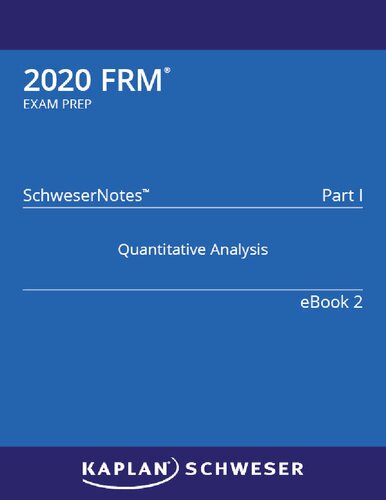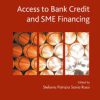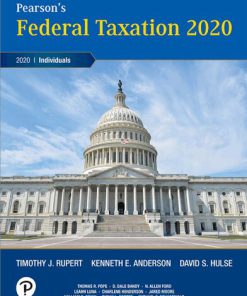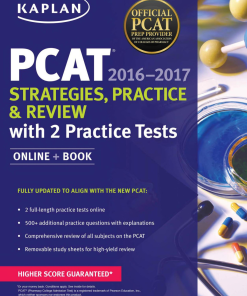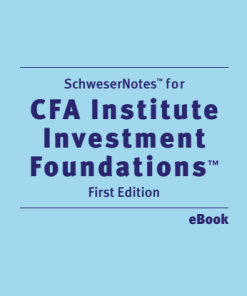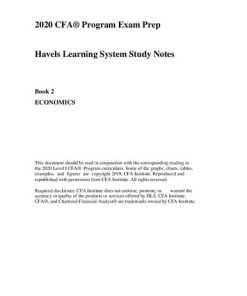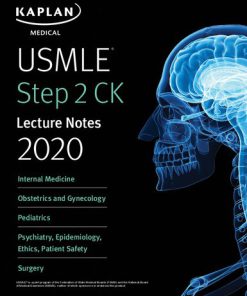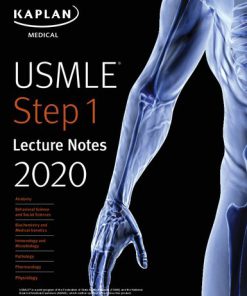2020 FRM SchweserNotes Part I Book 2 Quantitative Analysis 2020th Edition by Kaplan Schweser ISBN 1078801935 9781078801935
$50.00 Original price was: $50.00.$25.00Current price is: $25.00.
2020 FRM SchweserNotes Part I Book 2 Quantitative Analysis 2020th Edition by Kaplan Schweser – Ebook PDF Instant Download/Delivery: 1078801935 , 978-1078801935
Full download 2020 FRM SchweserNotes Part I Book 2 Quantitative Analysis 2020th Edition after payment
Product details:
ISBN 10: 1078801935
ISBN 13: 978-1078801935
Author: Kaplan Schweser
2020 FRM SchweserNotes Part I Book 2 Quantitative Analysis 2020th Table of contents:
Reading 12: Fundamentals of Probability
Exam Focus:
- Basics of probability concepts, including events, outcomes, and sample spaces.
- Key techniques for computing probabilities and understanding their properties.
Modules:
- 12.1: Introduction to probability.
- 12.2: Conditional, unconditional, and joint probabilities.
- Key Concepts: Understanding how probabilities relate under different conditions (e.g., conditional probability, joint probability, independent events).
- Answer Key for Module Quizzes: Check for practice problems on these concepts.
Reading 13: Random Variables
Exam Focus:
- Understanding the different types of random variables and how they are used to model uncertainty in outcomes.
Modules:
- 13.1: Probability mass functions (PMF), cumulative distribution functions (CDF), and expected values (mean).
- 13.2: Statistical measures: mean, variance, skewness, and kurtosis.
- 13.3: Probability density functions (PDF), quantiles, and linear transformations.
- Key Concepts: Be able to calculate expected values, understand distributions, and transformations.
- Answer Key for Module Quizzes: Focus on PMF, CDF, variance, skewness, and kurtosis for practice.
Reading 14: Common Univariate Random Variables
Exam Focus:
- Familiarize yourself with the key distributions used in statistics and their properties.
Modules:
- 14.1: Uniform, Bernoulli, Binomial, and Poisson distributions.
- 14.2: Normal and lognormal distributions.
- 14.3: Student’s t, Chi-squared, and F-distributions.
- Key Concepts: Know how to calculate probabilities and use these distributions in real-world scenarios.
- Answer Key for Module Quizzes: Focus on the properties and applications of each distribution.
Reading 15: Multivariate Random Variables
Exam Focus:
- Multivariate distributions, especially the relationships between multiple random variables.
Modules:
- 15.1: Marginal and conditional distributions for bivariate distributions.
- 15.2: Moments of bivariate random distributions.
- 15.3: Behavior of moments for bivariate random variables.
- 15.4: Independent and identically distributed random variables (i.i.d.).
- Key Concepts: Learn how to calculate and interpret joint, marginal, and conditional distributions, and understand the concept of independence.
- Answer Key for Module Quizzes: Pay attention to joint and conditional probabilities.
Reading 16: Sample Moments
Exam Focus:
- Estimating sample moments, particularly mean and variance.
Modules:
- 16.1: Estimating mean, variance, and standard deviation from sample data.
- 16.2: Estimating higher-order moments (e.g., skewness, kurtosis).
- Key Concepts: Understand how to compute sample moments and what they tell you about the data distribution.
- Answer Key for Module Quizzes: Review exercises on moment estimation.
Reading 17: Hypothesis Testing
Exam Focus:
- Hypothesis testing procedures, significance levels, and interpreting test results.
Modules:
- 17.1: Hypothesis testing basics: null and alternative hypotheses, significance levels.
- 17.2: Hypothesis testing results: p-values, test statistics, and conclusions.
- Key Concepts: Be able to conduct basic hypothesis tests (e.g., t-tests, chi-squared tests), interpret p-values, and make decisions based on test results.
- Answer Key for Module Quizzes: Focus on formulating hypotheses and interpreting test statistics.
Reading 18: Linear Regression
Exam Focus:
- Understanding simple linear regression and ordinary least squares (OLS) estimation.
Modules:
- 18.1: Regression analysis basics: simple linear regression models.
- 18.2: Ordinary Least Squares (OLS) estimation and interpretation.
- 18.3: Hypothesis testing in regression analysis.
- Key Concepts: Know how to estimate and interpret regression coefficients, test hypotheses in regression, and assess model fit.
- Answer Key for Module Quizzes: Practice interpreting OLS results and hypothesis tests for regression coefficients.
Reading 19: Regression with Multiple Explanatory Variables
Exam Focus:
- Expanding on simple regression to include multiple predictors.
Modules:
- 19.1: Multiple regression models: multiple independent variables.
- 19.2: Measures of fit in multiple regression: R-squared, adjusted R-squared.
- Key Concepts: Be comfortable with interpreting multiple regression output and understanding the role of each predictor variable.
- Answer Key for Module Quizzes: Focus on interpreting coefficients and model fit metrics in multiple regression.
Reading 20: Regression Diagnostics
Exam Focus:
- Diagnosing issues in regression models, such as heteroskedasticity and multicollinearity.
Modules:
- 20.1: Heteroskedasticity and multicollinearity: what they are and how to detect them.
- 20.2: Model specification errors.
- Key Concepts: Learn to identify and address issues that can affect the validity of your regression models.
- Answer Key for Module Quizzes: Review diagnostic tools like residual plots and variance inflation factors (VIF).
Reading 21: Stationary Time Series
Exam Focus:
- Analyzing time series data, focusing on stationary processes.
Modules:
- 21.1: Covariance stationary processes: definition and examples.
- 21.2: Autoregressive (AR) and moving average (MA) models.
- 21.3: Autoregressive moving average (ARMA) models.
- Key Concepts: Understand how to model and forecast stationary time series data.
- Answer Key for Module Quizzes: Practice with AR, MA, and ARMA models.
Reading 22: Non-Stationary Time Series
Exam Focus:
- Handling time series that exhibit trends or seasonal patterns.
Modules:
- 22.1: Time trends and their impact on time series analysis.
- 22.2: Seasonality in time series data.
- 22.3: Unit roots and their importance.
- Key Concepts: Learn how to handle non-stationary data and apply techniques like differencing to make data stationary.
- Answer Key for Module Quizzes: Focus on testing for unit roots and removing trends.
Reading 23: Measuring Return, Volatility, and Correlation
Exam Focus:
- Key financial measures for analyzing time series data in finance, such as returns and volatility.
Modules:
- 23.1: Defining returns and volatility.
- 23.2: Normal and non-normal distributions in finance.
- 23.3: Measuring correlations and dependence.
- Key Concepts: Be able to calculate returns, understand volatility models, and measure relationships between variables using correlation.
- Answer Key for Module Quizzes: Focus on calculating returns and volatility.
Reading 24: Simulation and Bootstrapping
Exam Focus:
- Using simulation techniques to model uncertainty and apply bootstrapping for statistical inference.
Modules:
- 24.1: Monte Carlo simulation and reducing sampling errors.
- 24.2: Bootstrapping and random number generation for inference.
- Key Concepts: Understand how simulation and bootstrapping are used to estimate distributions and conduct hypothesis tests.
- Answer Key for Module Quizzes: Practice using Monte Carlo methods and bootstrapping techniques.
People also search for 2020 FRM SchweserNotes Part I Book 2 Quantitative Analysis 2020th :
qualitative and quantitative analysis
difference between qualitative and quantitative analysis
journal of financial and quantitative analysis
qualitative and quantitative analysis in chemistry
types of quantitative analysis
Tags:
Kaplan Schweser,2020,SchweserNotes,Part I,Book 2,Quantitative,Analysis 2020th
You may also like…
Politics & Government
Federal Taxation 2020 2020th Edition Rupert 013516219X 9780135162194
Business & Economics - Professional Finance
2020 FRM SchweserNotes Part I Book 4 Valuation and Risk 2020th Edition Kaplan Schweser
Business & Economics - Professional Finance
Education Studies & Teaching
Business & Economics - Professional Finance
Medicine - Clinical Medicine


